Most of us have thrown together a plastic model or two, maybe even stuck with it long enough to take some pride in achieving a respectable competence in the modelling arts. But don’t go on Instagram unless you are prepared to enter the kingdom of the fanatics and see just how far above and beyond some people can take an otherwise casual hobby.
In fact, it was the arrival of Instagram that launched the career of professional model maker Marco Laviola, a 43-year-old wheat farmer from southern Italy by day, obsessive model maker in the off hours. His posts about his handmade creations resulted in a side business producing meticulously detailed models for people willing to spend thousands on a bespoke commission. I follow Laviola on the Grams (his handle is @marlinlav), awed by the degree of perfection he achieves with his large, scratch-built models with their opening hoods and doors and meticulous detailing.

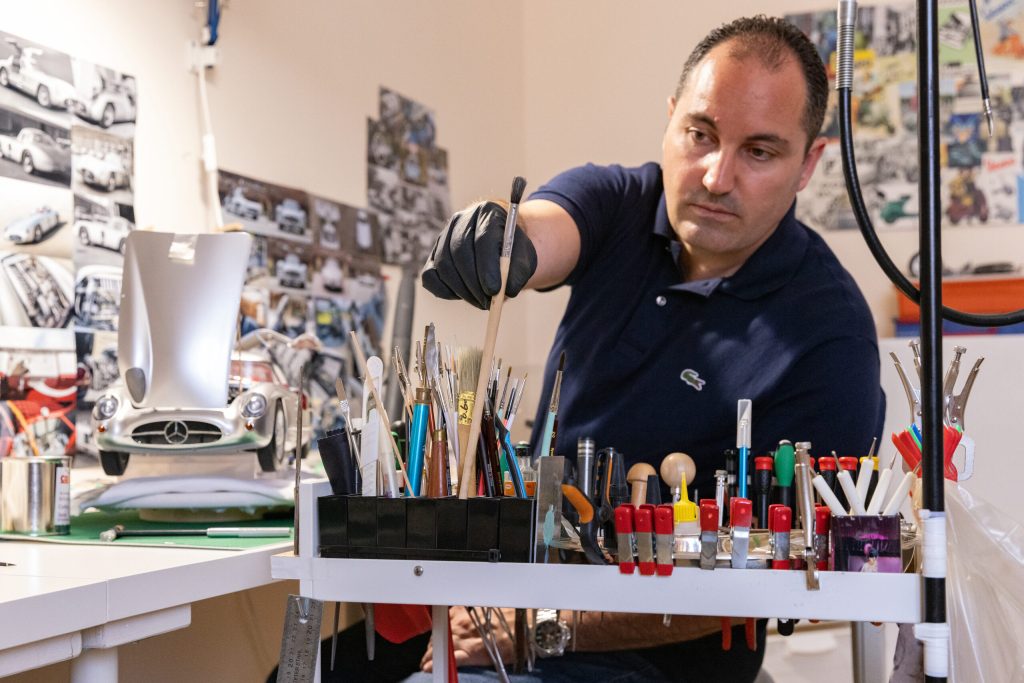
To put Laviola’s skills in perspective, you have to consider the scale he’s working in. Most common off-the-shelf car kits are in 1/20 or 1/24 scale, resulting in models that are about eight to ten inches long (I myself build exclusively in 1/43 scale, which produces a model car about four inches long, because I’m crazy). In the smaller scales, mistakes are easier to hide, as you need a magnifying glass to see them. Laviola, on the other hand, builds giant models in scales closer to 1/6 to 1/8, which means they are several feet long. Any imperfections in the fit and finish will scream from across a room, so it’s a scale for diehards only.
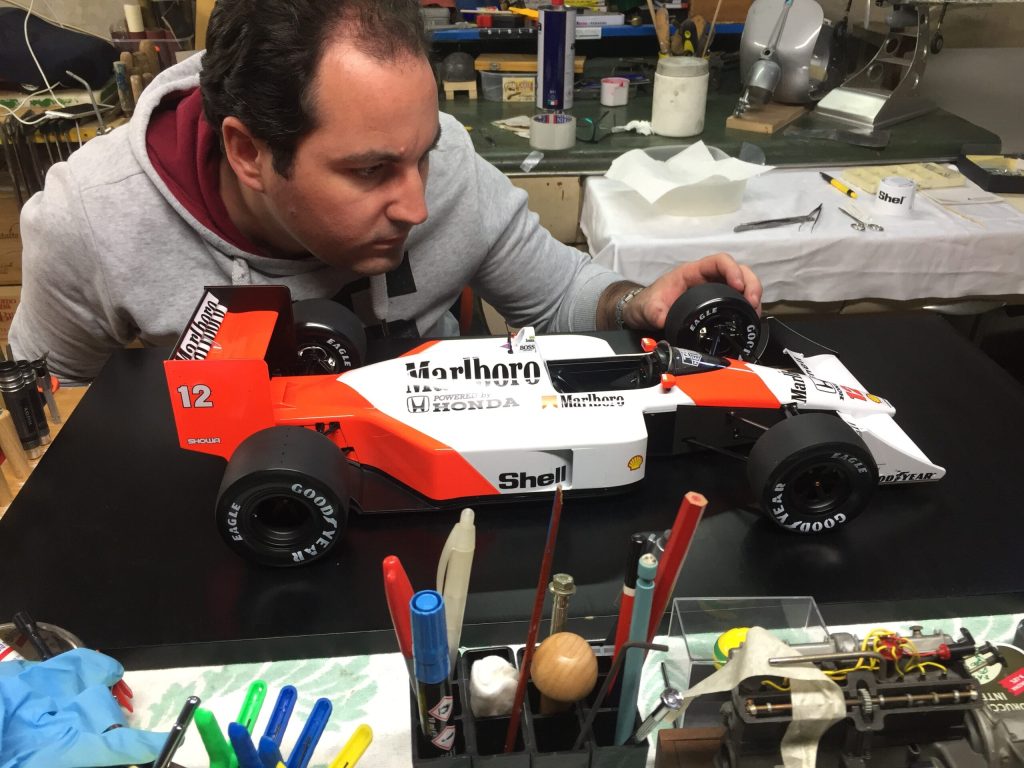
And one look at Laviola’s Instagram account, which chronicles the build of everything from vintage Ferraris to modern F1 cars to boats to the Saturn V rocket (with a mix of music playing in the background including 1940s and ‘50s American jazz standards), proves he’s come a long way since the Legos he used to play with as a kid growing up in the farm fields of Puglia.
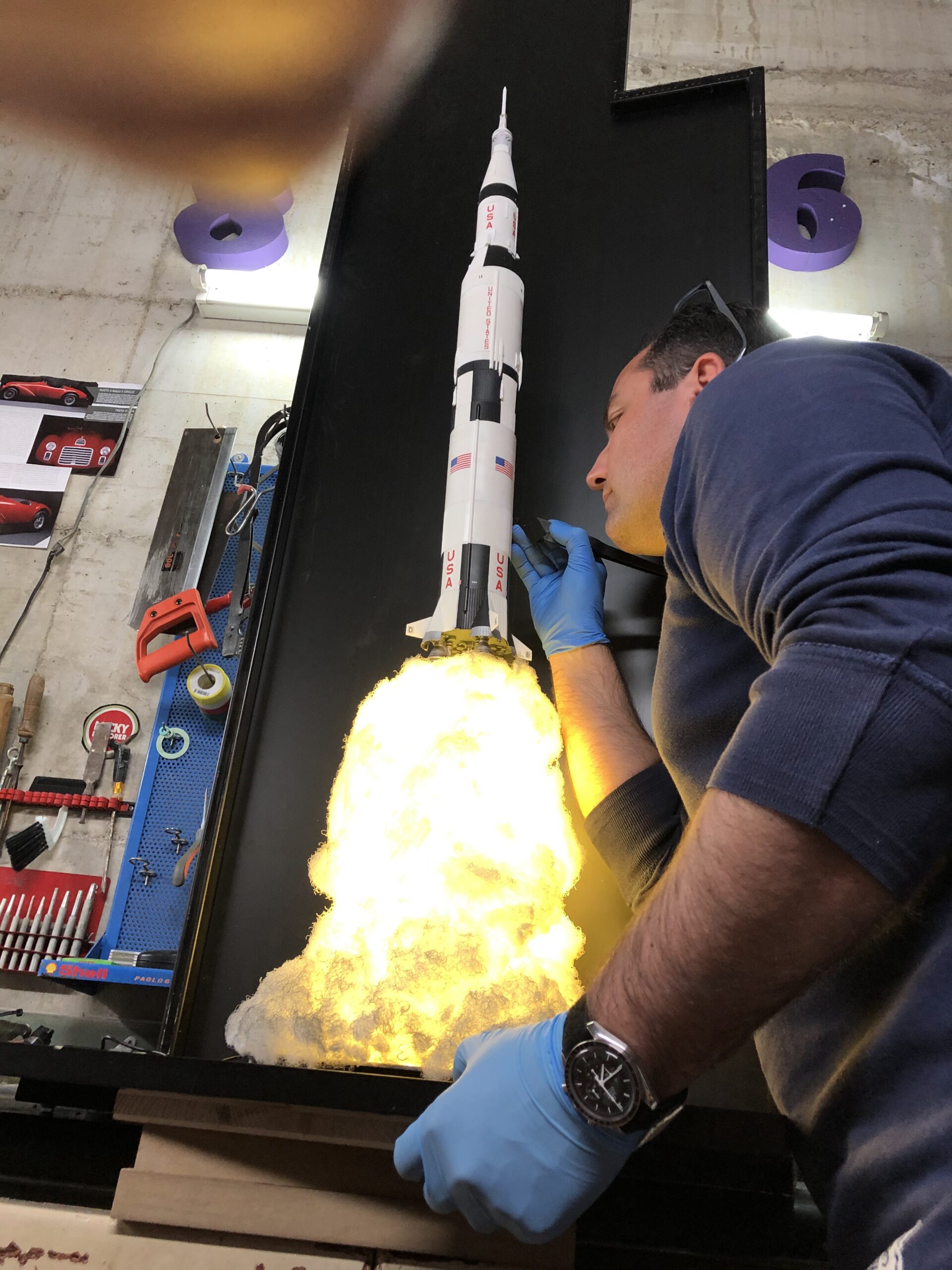
“I have been building models since I was little,” Laviola told me in an email. “I started with wooden clothespins mixed with fantasy, and then moved on to Legos with which I played whole days and nights. I gradually moved on to plywood and fretwork, alternating it with kits to assemble for my small age.” His first big scratch-built model was of a US aircraft carrier, constructed from wood and found objects. He was 11. Then, his father, a sculptor, introduced him to a whole new world of moulded resins and other materials, which years later drew him to 3D printing once machines were available at affordable prices.
He started posting on Instagram in 2018 and quickly drew a following, including showbiz celebs and F1 drivers wanting to commission a model from him. Nowadays he almost never builds a model for himself, he says, instead devoting all his time in his buco, or “hole,” as he calls his workshop, working on commissions, some of which take as long as six months and cost around £11,000, depending on the level of detail.
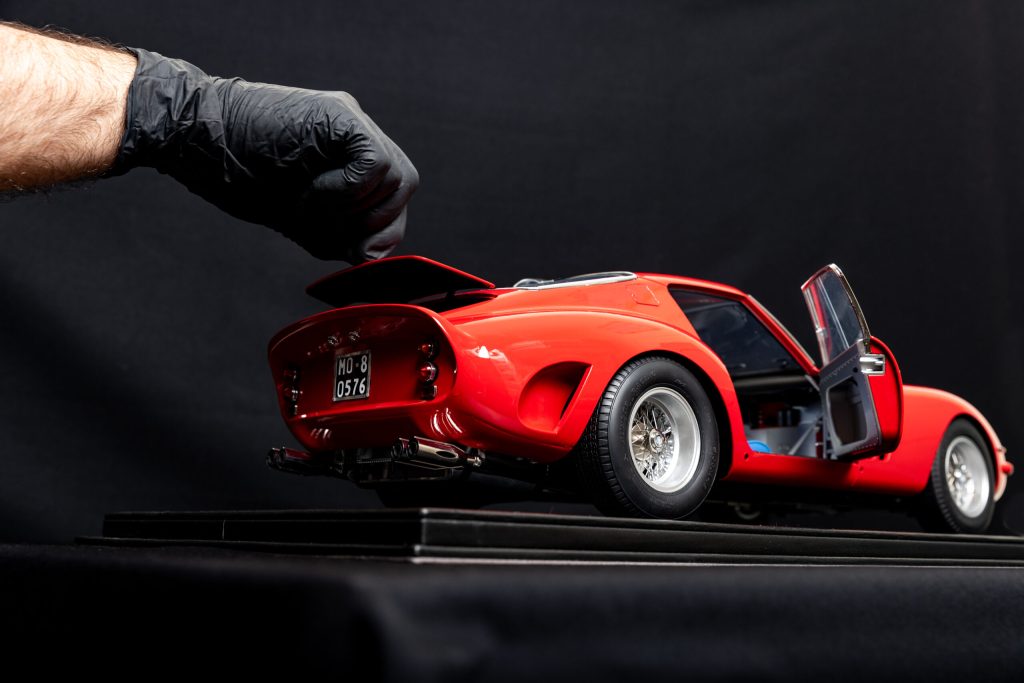
The commissioned-model industry is small and ranges from people who will assemble an off-the-shelf kit for you for a couple hundred bucks to backyard artisans who take a year or more to construct exact nut-and-bolt metal replicas that cost as much as a new Porsche. A few companies, such as Amalgam Collection, have made a go selling large high-end models at volume (granted, a tiny volume) that cost upwards of £15,000. And there are some companies that simply take plastic kits from well-known model brands such as Tamiya, clone all the parts with 3D printing, then assemble and sell them as their own finished models for £200 to £400.
As a one-man maker of individual commissions, Laviola falls somewhere toward the high end of that spectrum. Partly for fun, partly for marketing, he produces his own elaborate videos and sets them to music that he believes compliments the subject being modelled. He recently did a series of videos on an exhaustive reproduction of the James Bond Aston Martin DB5 complete with machine guns, hidden phone, and ejector seat, setting the vids to music from recent Bond films.
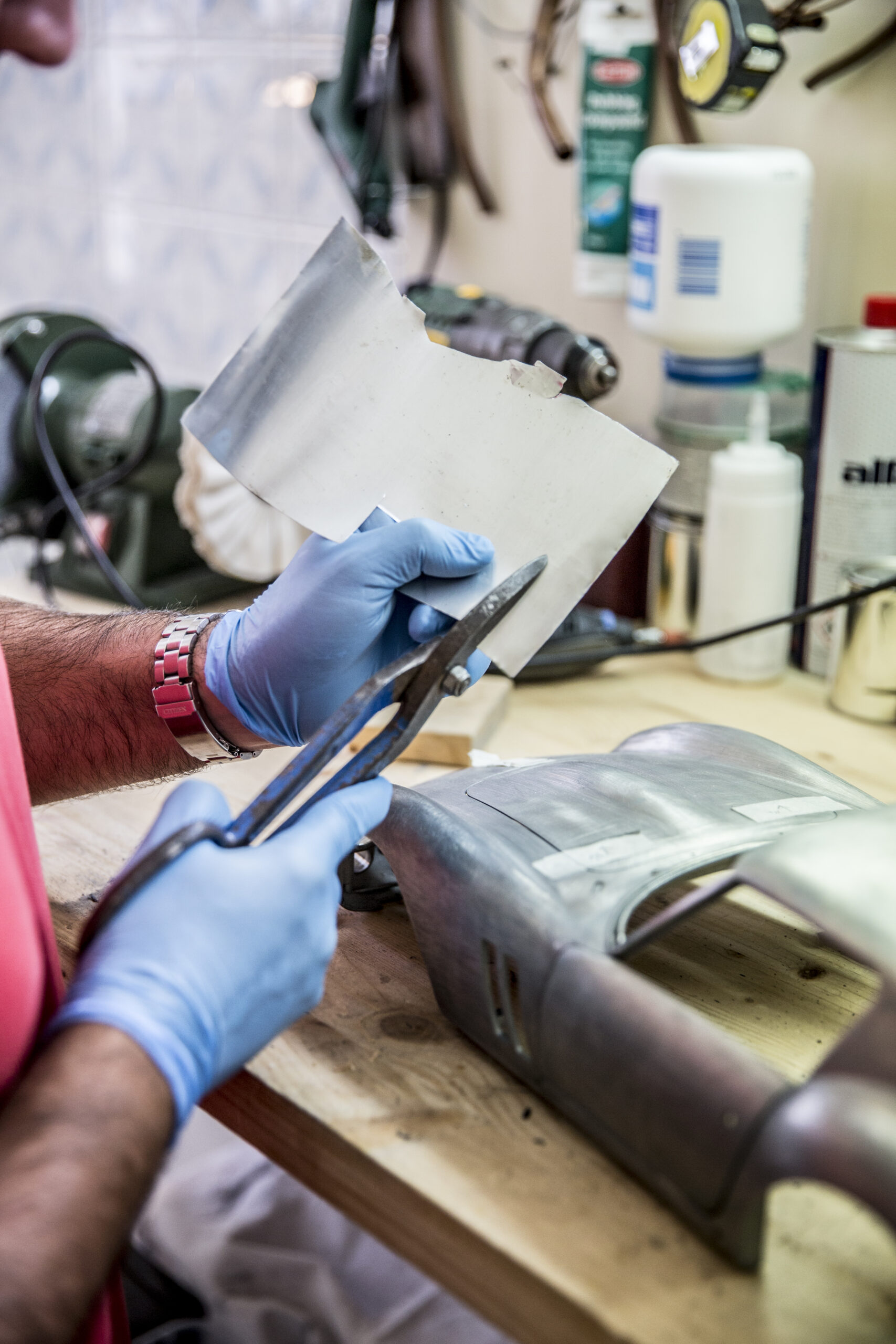
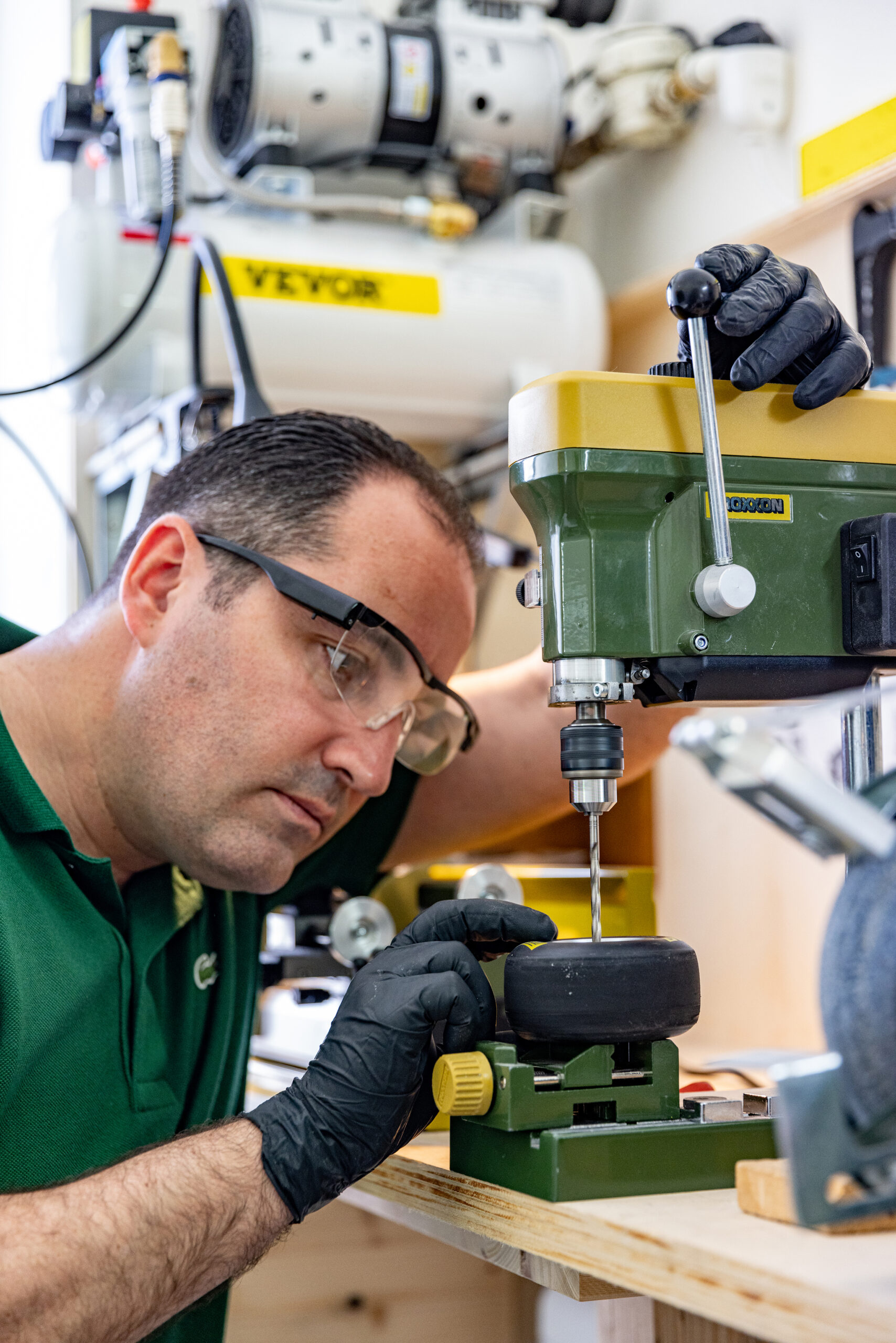
The modelling process starts with computer design and layout of the model and the fabricating of the 3D pieces. Sealed models take much less time to design and build, while those with opening hoods and doors are far more complex. In some cases, Laviola will use found objects or fabricate bits from sheet brass, steel wire, aluminium tubing, and other common hardware-store materials. Everything is assembled in advance to check for fit, then disassembled for painting. His favourite part is building the engines. “I literally go crazy building engines. I waste a lot of time modelling them and detailing them to the maximum,” he said.
His favourite build so far was a model of the original 1989 Batmobile for a customer who owns a drivable replica. And he collaborated with famed Ferrari engineer Nicola Materazzi on a model of the F40, of which Materazzi was chief engineer. After Materazzi, who died in 2022, signed the model, Laviola decided he couldn’t part with it, so he mounted it above his workshop “as if the engineer keeps me company,” and built another for the customer.
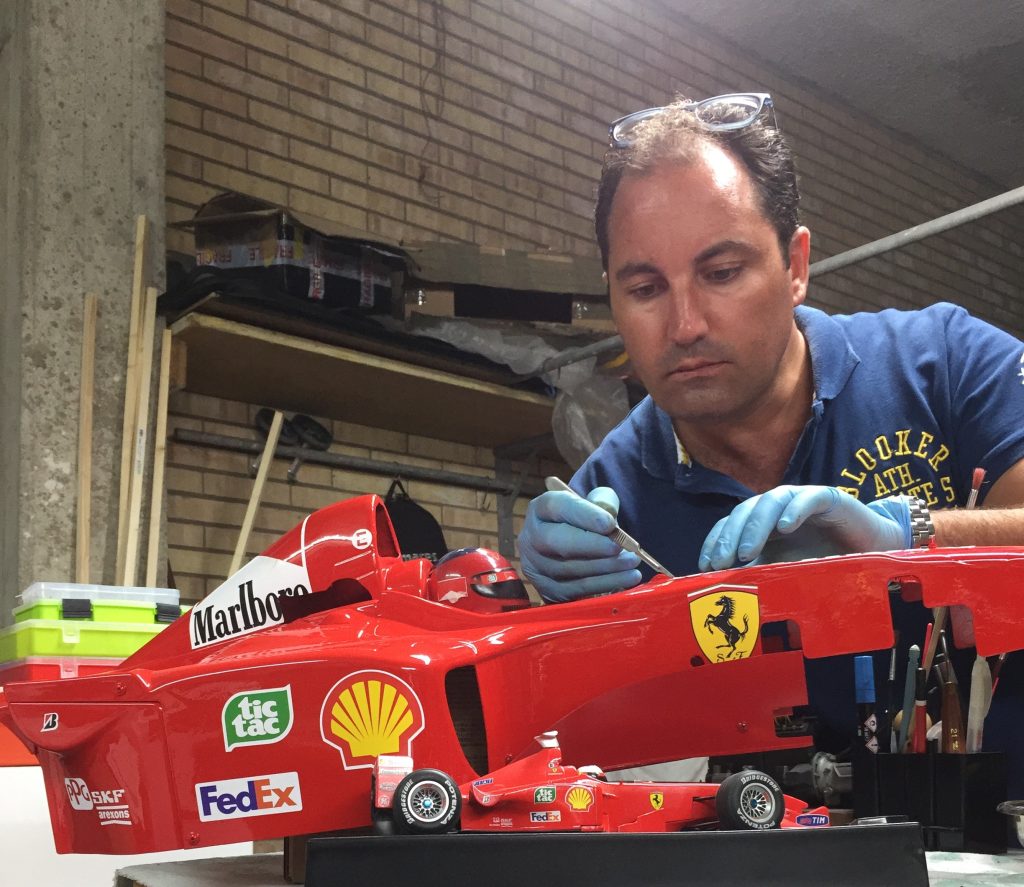
Laviola has three collaborators, all women. One of them, Arianna Crippa, is a pinstriper and “airbrush virtuoso” who mainly restores vintage motorcycles when not finishing and painting Laviola’s miniature bodywork panels. Another, Ester Favilla, takes studio photos of the models, and a third, Mari Antonietta, uses custom-cut foam and sponges to solve the tricky dilemma of packing the delicate constructions for shipping to customers worldwide.
As for the farming, which is of durum wheat that is particularly desirable for pasta-making, Laviola admits it sometimes intrudes on his modelling. “As we all know, nature has its own precise rhythms and doesn’t wait,” he said, “so the cultivation must be followed with attention and dedication, but it’s a job that also has a lot of downtime.”
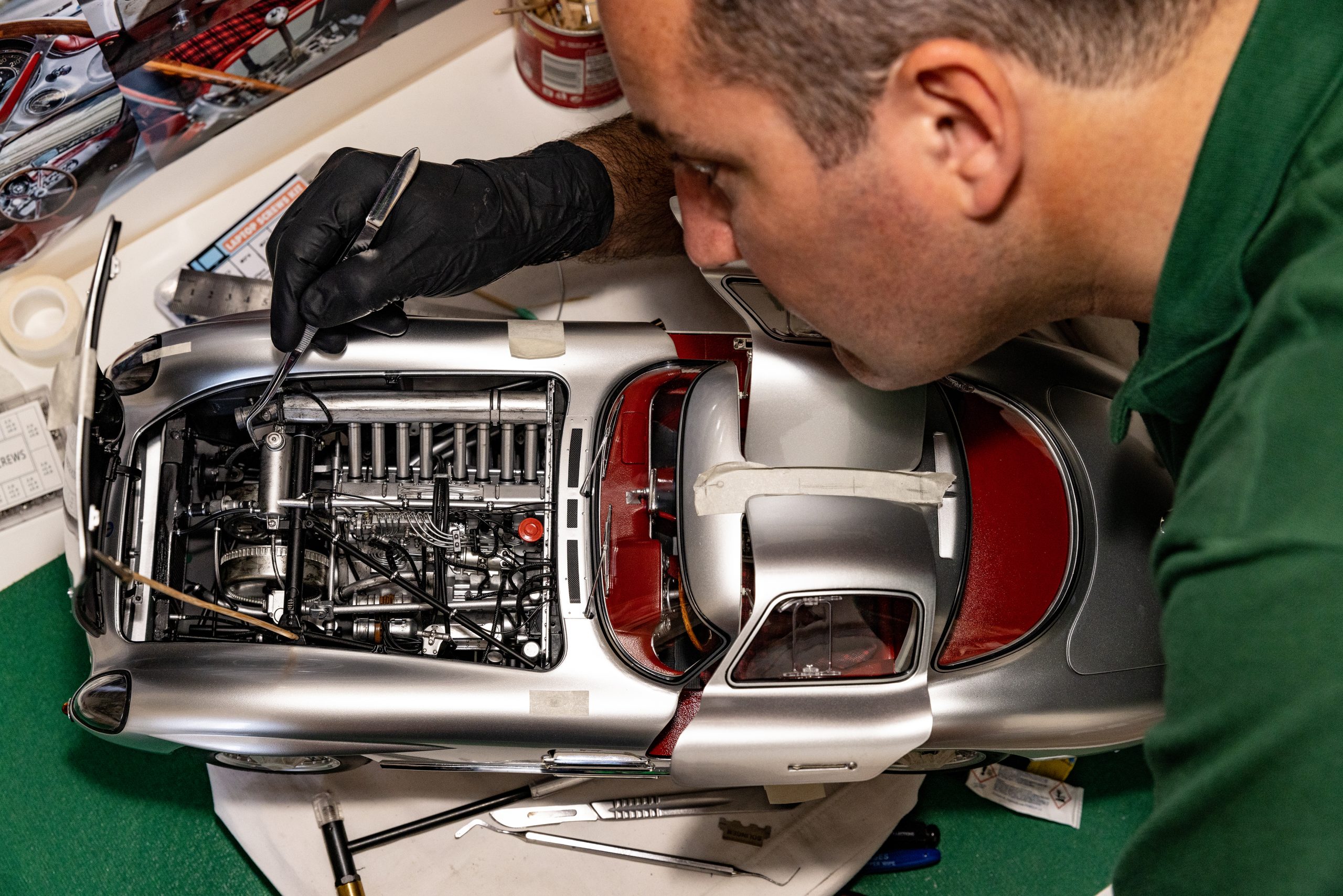



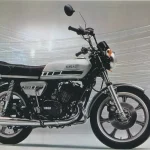



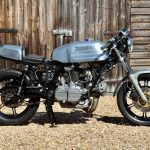

Incredible skill set. Fantastic, and every boys/grown ups dream.